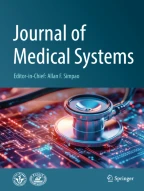Abstract
Adaptive Neuro-Fuzzy Inference System (ANFIS) is one of the useful and powerful neural network approaches for the solution of function approximation and pattern recognition problems in the last decades. In this paper, the diagnosis of renal failure disease is investigated using ANFIS approach. Totally the raw data of 112 patients is obtained from Istanbul and Cerrahpasa Medical Faculties of Istanbul University, Turkey. Sixty-four of them are related to renal failures and the rest data belong to healthy persons. In ANFIS model, three rules and Gaussian membership functions are chosen, where rules are determined by the subtractive clustering method. Seven parameters of the patients are considered for the input of the system. These are: Blood Urea Nitrogen (BUN), Creatinine, Uric Acid, Potassium (K), Calcium (Ca), Phosphorus (P) and age. We try to decide whether the patient is ill or not. We have reached 100% success in ANFIS and have better results compared to Support Vector Machine (SVM) and Artificial Neural Networks (ANN).
Similar content being viewed by others
Explore related subjects
Discover the latest articles, news and stories from top researchers in related subjects.References
Beers, M. H., Berkow, R.: The Merck manual of diagnosis and therapy, chapter 222—renal failure, 17th edition. Merck Research Laboratories, Division of Merck & Co., Inc., Whitehouse Station, NJ, 1999.
Savica, V., Cala, L. A., Davis, P. A., Bellinghieri, G.: Hyperphoshoremia in kidney failure—salivary phosphate as a marker and possible target.. Clin. Nephrol. 69(3):229, 2008.
Ruilope, L. M., Garcia-Puig, J.: Hyperuricemia and renal function. Curr. Hypertens. Rep. 3(3):197-202, 2001. doi:10.1007/s11906-001-0038-2.
Iseki, K., Ikemiya, Y., Inoue, T., Iseki, C., Kinjo, K., Takishita, S., Am, J.: Significance of hyperuricemia as a risk factor for developing ESRD in a screened cohort. Kidney Dis. 44(4):642-650, 2004. doi:10.1016/S0272-6386(04)00934-5.
Médaille, C., Trumel, C., Concordet, D., Vergez, F., and Braun, J. P., Comparison of plasma/serum urea creatinine concentrations in the dog: a 5 year retrospective study in a commercial veterinary clinical pathology laboratory. J. Vet. Med. A Physiol. Pathol. Clin. Med. 51(3):119–123, 2004.
Prevat, A., Martini, S., Guiqnard, J. P.: Glomerular filtration markers in pediatrics. Rev. Med. Suisse Romande. 122(12):625-630, 2002.
Jang, J.-S. R.: ANFIS: Adaptive-network-based fuzzy inference system. IEEE Trans. Syst. Man Cybern. 23(3):665-685, 1993. doi:10.1109/21.256541.
Ubeyli, E. D., Güler, I.: Automatic detection of erythemato-squamous diseases using adaptive neuro-fuzzy inference systems. Comput. Biol. Med. 35(5):421-433, 2005. doi:10.1016/j.compbiomed.2004.03.003.
Castellano, G., Fanelli, A. M., Mencar, C.: A neuro-fuzzy network to generate human understandable knowledge from data. Cognit. Syst. Res. 3:125-144, 2001. doi:10.1016/S1389-0417(01)00055-9.
Akgundogdu, A., Gozutok, A., Kilic, N., Osman, O. N.: diagnosis of power transformer using neuro-fuzzy model. IU-JEEE. 8(2):699-706, 2008.
Jang, J.-S. R.: Self-learning fuzzy controllers based on temporal back propagation. IEEE Trans. Neural Netw. 3(5):714-723, 1992. doi:10.1109/72.159060.
Sugeno, M., Kang, G. T.: Structure identification of fuzzy model. Fuzzy Sets Syst. 28:15-33, 1988. doi:10.1016/0165-0114(88)90113-3.
Paplinski, A. P.: Neuro-fuzzy computing. Available at: http://www.csse.monash.edu.au/courseware/cse5301/04/index.html.
Chiu, S.: Fuzzy model identification based on cluster estimation. J. Intell. Fuzzy Syst. 2(3):267-278, 1994.
Chen, J. Y., Zheng, Q., Ji, J.: A PSO-based subtractive clustering technique for designing RBF neural networks. Proceeding of IEEE World Congress on Computational Intelligence, 2047–2052, 2008.
Toosi, A. N., Kahani, M., Neuro-Fuzzy, A.: Classifier for intrusion detection systems. Proceedings of the CSICC Conference, Tehran, IRAN, 2006.
Author information
Authors and Affiliations
Corresponding author
Rights and permissions
About this article
Cite this article
Akgundogdu, A., Kurt, S., Kilic, N. et al. Diagnosis of Renal Failure Disease Using Adaptive Neuro-Fuzzy Inference System. J Med Syst 34, 1003–1009 (2010). https://doi.org/10.1007/s10916-009-9317-2
Received:
Accepted:
Published:
Issue Date:
DOI: https://doi.org/10.1007/s10916-009-9317-2
